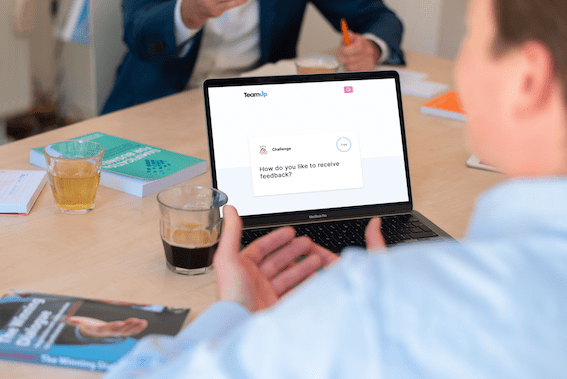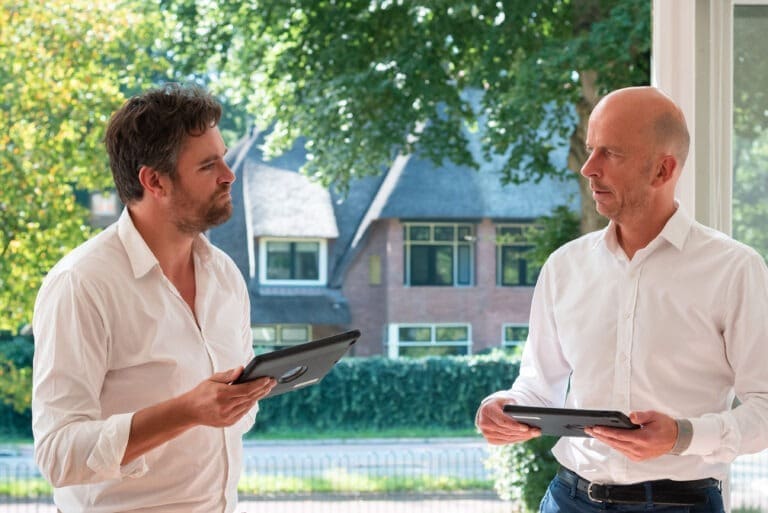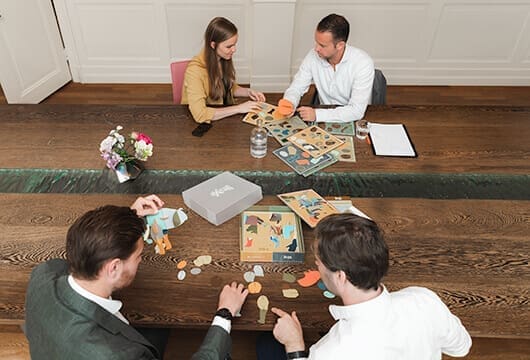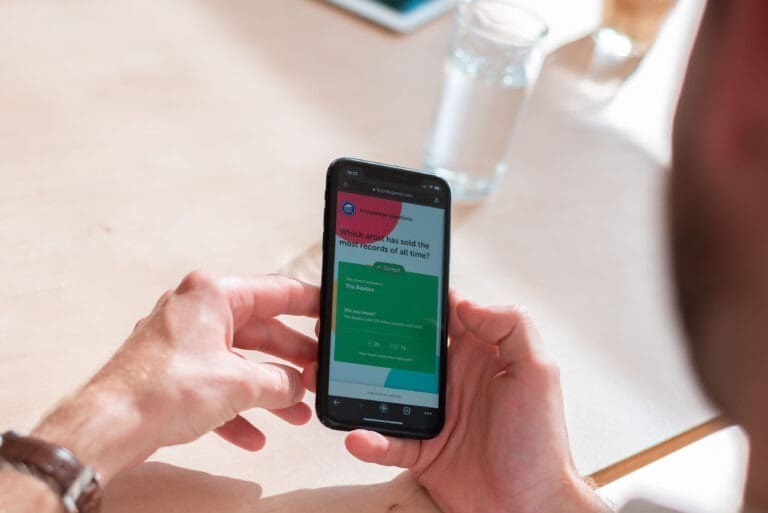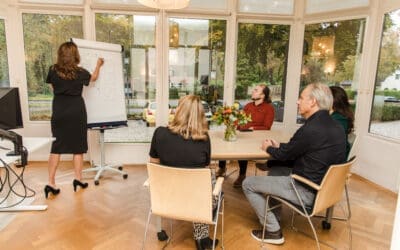‘Tell me and I will forget. Show me and I will remember. Let me experience it and I will make it my own.’
Confucius (551– 479 v. Chr.)
We already know that serious games are powerful tools for faster and more effective learning. But do we know why this is the case? Why do you learn faster when you play a game? And why is it that we remember the information we learn longer? This blog answers these questions using various scientific learning models and discovers the psychological mechanisms behind serious gaming.
Kolb’s learning cycle
Each individual differs in the way they develop and absorb knowledge, and each individual has their own learning style. Nevertheless, there are general psychological mechanisms behind serious gaming. According to Kolb’s learning cycle, effective learning follows a certain cycle and this can be divided into four phases: experiencing, reflecting, analysing and experimenting. In a company, this looks as follows: In phase one, gaining actual experience is central. In phase two, it is important to reflect on the behaviour exhibited and its effect. In the third phase, an explanation of the effect is given. In the final phase, experiments are carried out to see if the findings gained earlier work in new situations and if it is more widely applicable. This in turn creates new experiences and so the whole cycle is completed again.
There are also four different learning styles: the dreamer, the thinker, the decision-maker and the doer. Every person has a preference for a certain learning style, which means the cycle can also be started in different phases. For instance, the doer will want to start playing immediately and only later see what the logic behind it was, while a thinker will want to look up information first to come up with a theory before playing the game.
According to Kolb (1984), it is important to go through all stages of the learning cycle and apply multiple learning activities. Only then does learning become truly effective. But what does this have to do with serious games?
The Game Cycle
In a game, each part of the learning cycle is explicitly addressed and gone through several times in a short period of time. Serious games in fact link thinking and doing in a unique way. This will be explained using Koops’ Serious Game Lemniscate Model.
The Serious Game Lemniscate Model is very similar to Kolb’s learning cycle in that you go through the same cycle. Only another cycle has been added to the Lemniscaat model; the game cycle. What does this game cycle entail and how is it connected to the learning cycle?
As the name “game cycle” suggests, while playing a normal game, you also go through a cycle. The big difference with the learning cycle is that the game cycle is done in an intuitive way. This is because in a game, the player is in a ‘”flow”, also called the “Game flow”. In the flow state, the player is in supreme concentration and has temporarily lost awareness of time and a sense of self-awareness. Something happens and the player reacts to it intuitively, then assesses the result. In other words, the game cycle is an extended doing phase and the learning cycle is an extended thinking phase.
This cycle will be recognisable to many people. Following the previous phase, the player has gained an experience, but it has yet to be processed into knowledge. To do this, it is necessary to switch from the game cycle to the learning cycle. Once an observation has been made, it is reflected upon and then the switch to the learning cycle is made. One becomes cognitively aware of what they have learned and how it can be placed in a scientific context. When you have made that switch, only then have you applied the “serious” part of the serious game. The other way around is also possible. As an experiential step in the learning cycle, it can also include a game cycle to gain experience in using a certain concept in the virtual (and safe) environment. In this way, the game cycle and the learning cycle are linked to each other.
The Ebbinghaus forgetting curve
Not only is learning effective during a serious game, but the new information is also remembered for longer.
Psychologist Hermann Ebbinghaus has researched how long information is remembered and how much is forgotten. He found that after only 20 minutes, we have forgotten more than 50% of relatively meaningless data, and that later on, the rate at which knowledge is lost decreases steadily.
Meaningful information that matters is less likely to be forgotten than the meaningless information. 90% of knowledge is learned informally in the workplace through experiences, knowledge and skills needed to do the job. These are relevant. During a serious game, you learn to develop these skills in a safe way. The game adds something and therefore it is better remembered.
The way information is presented plays a big role in how the brain processes information. Everyone has their own learning preference, as discussed earlier, and therefore it is better remembered. The advantage of serious gaming is that it incorporates every learning preference. Also, a serious game often tells a story. A story has a beginning, a middle, an end and a problem that is eventually solved. This way, people can attach meaning to the information and a story is also more fun to follow.
It is important to repeat the information shortly after the first moment when information is processed, and to keep repeating it at different times thereafter. By sharing experience, knowledge and skills gained in the game with others, a professional can take what they have learned into subsequent experiences.
Why do you learn faster and more effectively when you play a game?
Serious gaming is thus an effective and fast way of learning, because it links two learning cycles: the game cycle and the learning cycle. You go through the serious game cycle: experiencing, observing, reflecting, concept formation, intentions and taking action. In a game, each learning style is explicitly addressed and the stages are gone through several times. What can take years in the workplace can be achieved in a mimicked simulation in a short time. The information gained is also remembered for longer. By experiencing it yourself in a fictional setting and then reflecting on this, the knowledge is internalised so that it can be applied in the real world.
Of course, several factors also come into play when it comes to learning than just the aforementioned psychological mechanisms behind serious gaming. For instance, having fun and motivation is also very important for learning and remembering new knowledge.
For this blog on the psychological mechanisms behind serious gaming, we used the following sources:
- Horst, A. V., Wanrooy, M., Meyer, H., & Serlie, A. (2019). Groot Psychologisch Modellenboek, 65 modellen voor ontplooiing van jezelf en anderen.
- Kolb, D. A. (1984). Experiental Learning: Experience As The Source Of Learning And Development.
- Koops, M. (2012). Een model voor ervaringsleer binnen games Het Serious Gaming Lemniscaat Model.
- Otto, M., Van Buren, E., Mols, H. & Robben, M. (2016 ). Katalysator voor organisatieverandering: Serious gaming.
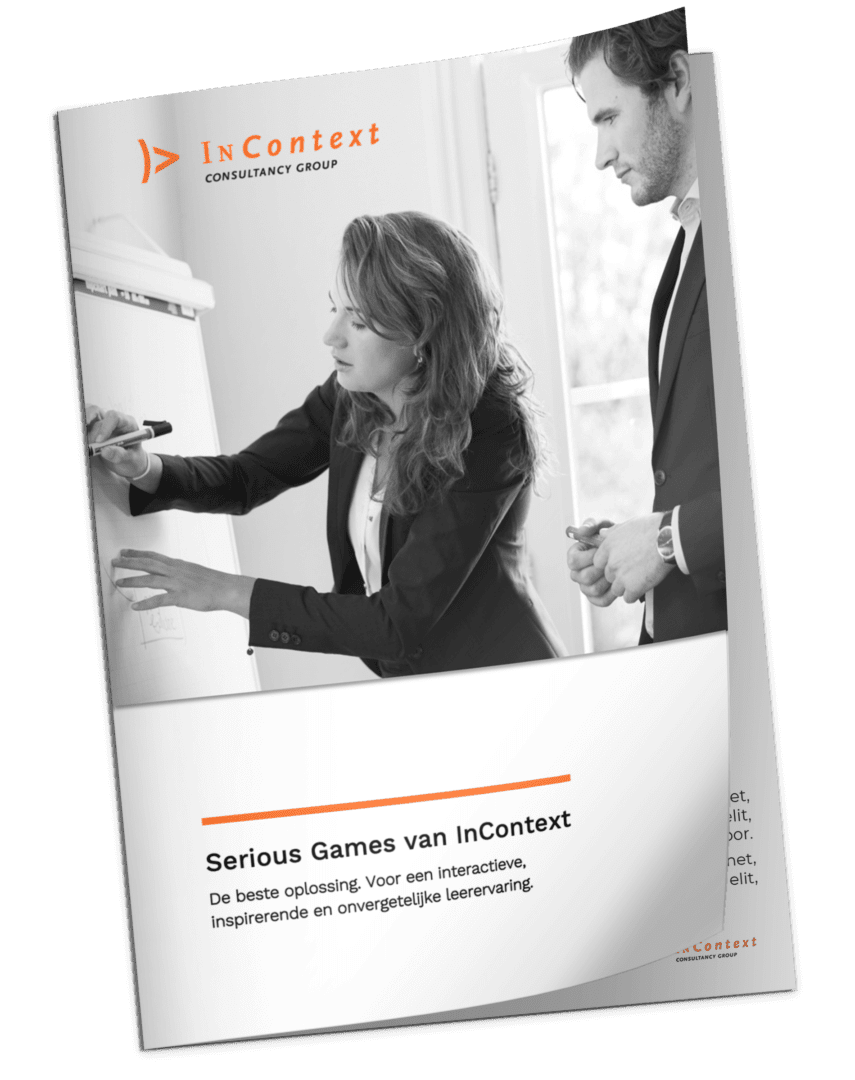
Prospectus Serious Games
Want to know more about our serious games and see how they can be used for your organisation? Then download the free brochure now.
Read more about serious gaming





